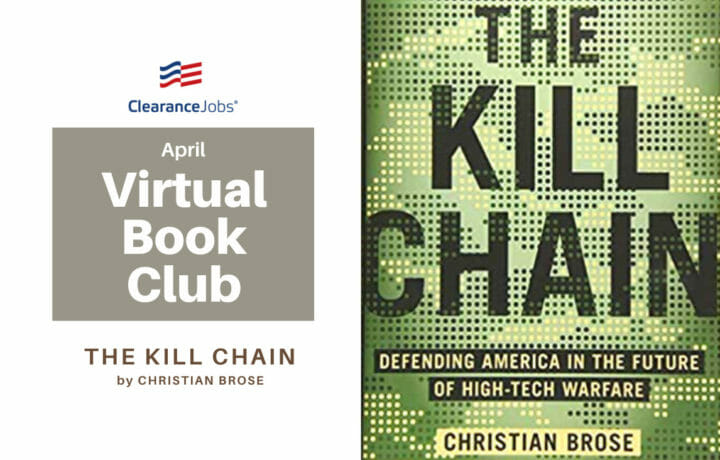The future of war is less terrain and more tech. America’s traditional sources of military power are competing with rivals who are playing a different game and operating under their own set of rules, all underpinned by emerging technologies such as artificial intelligence and autonomous systems. The possibility of losing tomorrow’s tech war is significant, but it’s not inevitable.
In his book that’s been called a ‘wake-up call’ about the evolving nature of national defense, Christian Brose looks at how the U.S. military could adapt to tackle the tech threats that are the benchmarks of future conflict. The Kill Chain is a fast-paced, well-informed overview of the information and military revolution that’s currently taking place. It’s also the April ClearanceJobs book club pick, so join us and read along this month as we explore the future – and how the U.S. can still win in today’s changing paradigm.
Want to read with us? The first 10 to email lindy.kyzer@clearancejobs.com will receive a free copy of The Kill Chain.
The U.S. has spent so much of modern history as the dominant military power that it’s difficult for many Americans to imagine a world where the U.S. isn’t the leader in great power competition. But foreign actors are hot on America’s heels, fueled by the democratization of technology and global dynamics that make it possible for other global powers to not just compete with America, but win. The Kill Chain presents both the problems presented today, and the challenges the U.S. military faces – but also a number of solutions.
In a time when U.S. technology is stolen by China nearly as fast as it’s created, new dynamics must come into play. Brose makes the case that the military should be ‘defined less by the strength and quantities of its platforms than by the efficacy, speed, flexibility, adaptability, and overall dynamism of its kill chains.’
That dynamic is not the current focus of U.S. military strategy or technology – but the good news is steps are being taken that signal both Congress and the military understand the emerging threats faced and the changes that need to take place to make America more agile, responsive, and secure. The 2019 National Defense Authorization Act called out China’s Huawei Technologies Company and ZTE Corporation.
The next battlefield could be comprised of 5G networks. Major actors and vulnerabilities could be located in arenas that weren’t even considered relevant in military circles decades ago. But when many Americans think of the role of the U.S. military, or vulnerabilities, they likely still have a picture of a forward operating base or a multi-billion dollar ship or plane in their heads. Shifting that awareness and creating strategy frameworks that address technology and the powers in play properly is key – and The Kill Chain hopes to help bridge that divide.
“I am writing this book because I believe the only way the United States can take advantage of this opportunity to reimagine our national defense is if more Americans better understand the issues related to emerging technologies and the future of warfare,” writes Brose in his introduction.
The future of the kill chain is in play – and if you’re looking to understand it better, read along with us this month.




